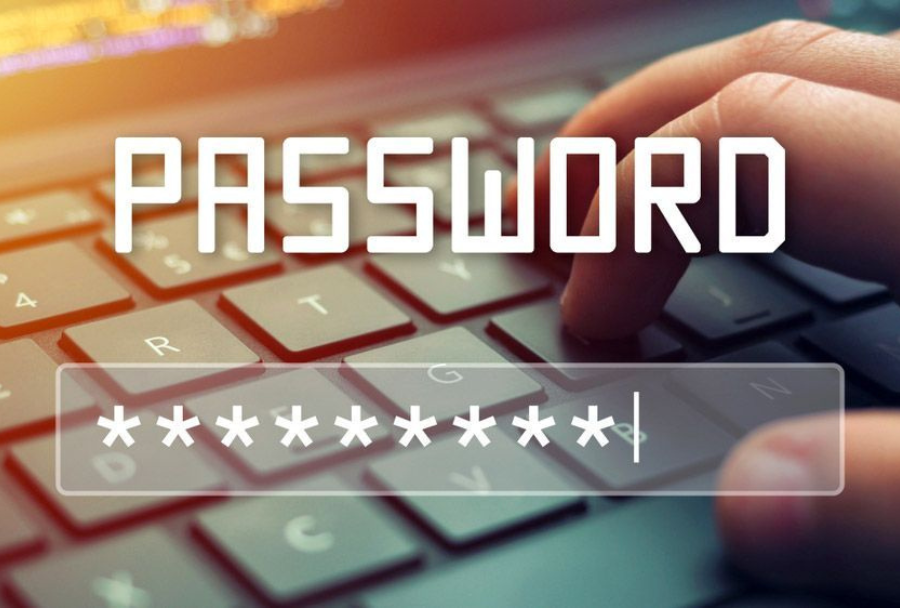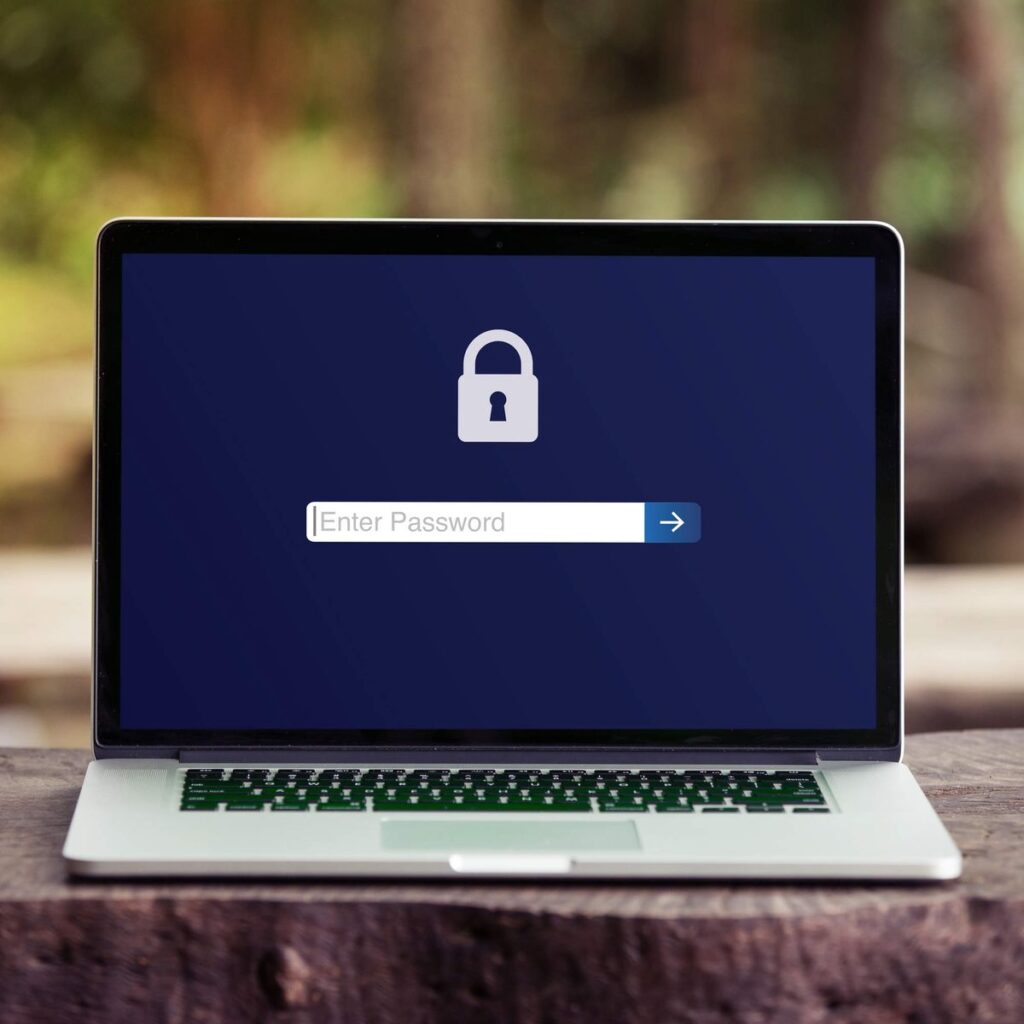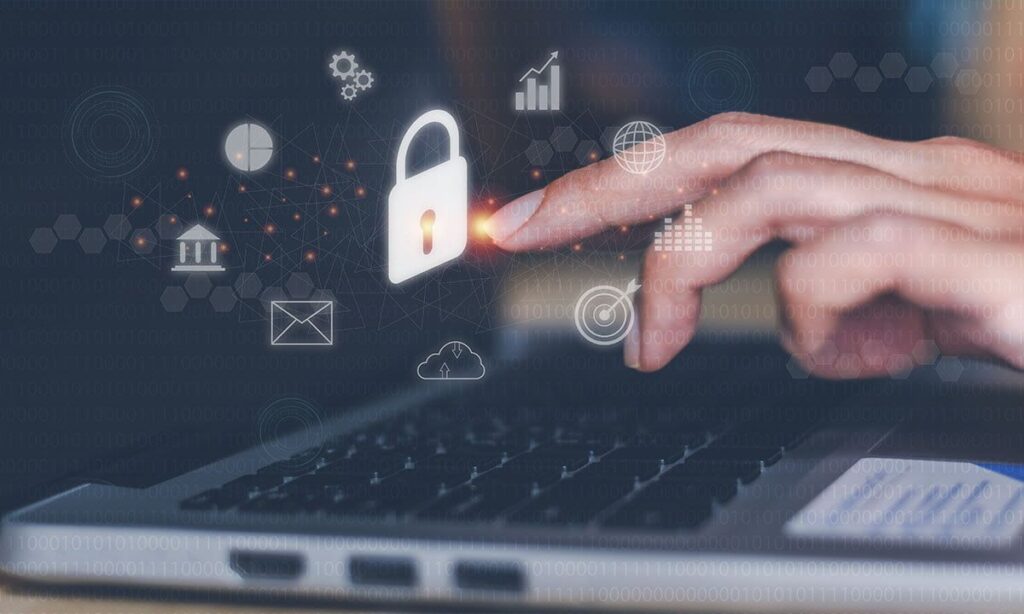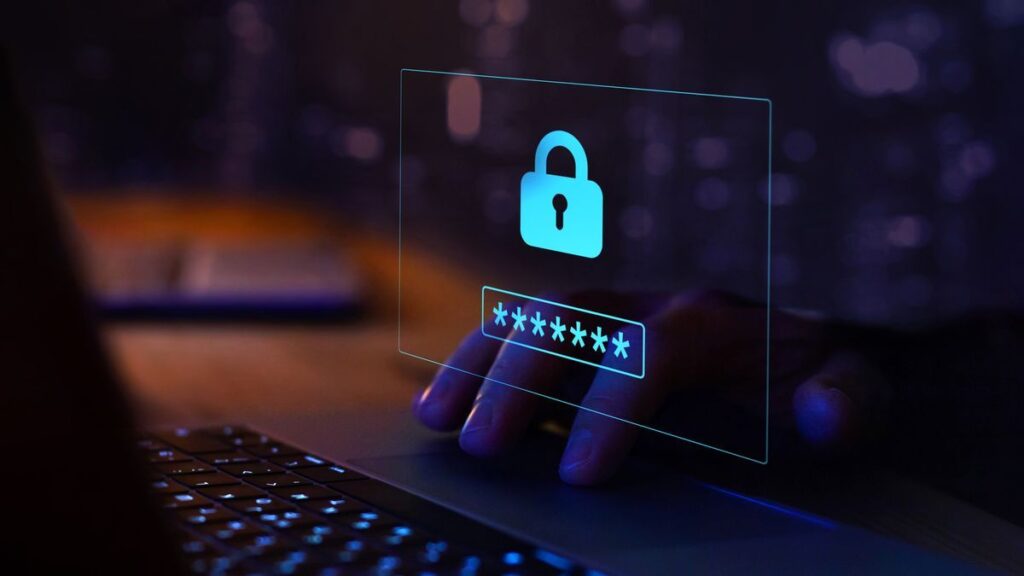Tech
Recover Forgotten Passwords 5 Safe Methods Without Risk

Table of Contents
Introduction
In today’s digital era, passwords are the primary key to almost every aspect of our online life—from personal emails and banking to social media and professional accounts. They protect sensitive information, financial data, and even personal memories. Yet, forgetting a password is one of the most common digital frustrations, affecting millions of users worldwide every year.
Password loss can lead to inconveniences like being locked out of an account, delays in work, financial risk, or even identity theft. While modern platforms offer multiple recovery options, unsafe recovery methods—such as third-party apps or phishing links—can expose users to scams and cyberattacks.
This comprehensive guide explores the causes of forgotten passwords, safe recovery methods, prevention strategies, and emerging technologies in password management. By the end, you’ll understand how to recover your accounts efficiently and secure them against future incidents.
1. Understanding Passwords
1.1 Purpose of Passwords
Passwords serve as the primary line of defense in online security. They verify your identity to ensure that only authorized users can access an account. Passwords serve as the most common and essential form of digital security, acting as a gateway to protect sensitive information and maintain privacy. At their core, passwords verify a user’s identity, ensuring that only authorized individuals can access an account, device, or service. Whether it’s an email, social media account, online banking, or workplace system, a strong password prevents unauthorized access and safeguards personal, financial, and professional data.
One key purpose of passwords is to protect personal information. Digital accounts often store sensitive details such as contact information, personal documents, photos, and even medical records. Without secure passwords, this information can be easily accessed, stolen, or misused by hackers. Similarly, passwords are crucial for financial security. Online banking, payment apps, and e-commerce accounts rely on strong authentication to prevent fraud, unauthorized transactions, and identity theft.
Passwords also help maintain control over digital identity. Many people have multiple online accounts linked through email or social media. A compromised password on one platform can jeopardize access to other accounts. By using unique, strong passwords, users prevent chain reactions of breaches across platforms.
Additionally, passwords serve a regulatory and professional function, especially in workplaces. Employees must protect company data, confidential reports, and client information. Secure passwords are part of broader IT policies designed to prevent data leaks and maintain organizational integrity.
Finally, passwords play a role in account recovery and authentication systems. They act as the first step in multi-factor authentication (MFA), which adds additional security layers such as verification codes or biometric data. In summary, passwords are more than just a login requirement—they are a vital security measure that protects digital identity, personal information, and financial assets.
Strong, unique passwords protect:
- Personal information, including contact details and photos.
- Financial accounts such as banking and payment apps.
- Work and enterprise accounts, which may contain sensitive company data.
- Access to other linked accounts, as many passwords act as “master keys” for recovery purposes.

1.2 Common Password Mistakes
Even though passwords are essential for digital security, many users make mistakes that compromise their accounts. Recognizing these common pitfalls is the first step toward creating safer, more secure login credentials.
One of the most frequent mistakes is using weak or simple passwords. Examples include “123456,” “password,” or repeating letters like “aaaaaa.” These are extremely easy for hackers to guess using automated tools, leaving accounts vulnerable to unauthorized access. Similarly, relying on predictable information—such as birthdays, names, or favorite sports teams—makes passwords easier to crack. Hackers often gather personal details from social media to guess passwords quickly.
Another common error is password reuse across multiple accounts. Many users apply the same password for email, banking, and social media. While convenient, this practice is risky. If one account is compromised, all other accounts using the same password can be accessed, resulting in a domino effect of security breaches.
Many also fail to update passwords regularly. Accounts that use the same password for years are susceptible to long-term threats, especially if the password is leaked in a data breach. Similarly, storing Forgotten Passwords insecurely—writing them on paper, keeping them in unencrypted files, or sharing them via email or messaging apps—can expose sensitive information to others.
Finally, neglecting multi-factor authentication (MFA) is a critical oversight. Even strong Forgotten Passwords can be compromised, but MFA adds an extra layer of protection, such as a verification code or biometric check. Without it, accounts remain more vulnerable to hacking attempts.
By avoiding weak Forgotten Passwords, refraining from reuse, updating credentials regularly, and enabling MFA, users can significantly reduce their risk of cyberattacks and keep their digital identities secure. Awareness of these mistakes is the first step toward responsible online behavior.
Even when users understand the importance of Forgotten Passwords, several common mistakes make accounts vulnerable:
- Weak passwords: Easily guessable Forgotten Passwords like “123456” or “password” can be quickly cracked.
- Reusing passwords: Using the same password across multiple accounts means that if one account is compromised, all linked accounts are at risk.
- Writing passwords down insecurely: Physical notes or unencrypted digital files may be accessed by unauthorized individuals.
- Frequent untracked changes: Frequently changing Forgotten Passwords without tracking updates can lead to forgetting the latest one.
Understanding these mistakes is essential before exploring recovery solutions, as prevention is always easier than dealing with a forgotten password.
2. Causes of Forgotten Passwords
Forgetting passwords is one of the most common issues faced by digital users, and it can happen for a variety of reasons. Understanding the causes can help in creating strategies to prevent such scenarios in the future.
A primary cause is the sheer number of accounts and passwords people manage today. With social media, banking, email, shopping, and work-related platforms, users often juggle dozens of Forgotten Passwords. This overload can lead to confusion, making it difficult to remember which password corresponds to which account.
Another significant factor is infrequent usage. Accounts that are rarely accessed are more prone to forgotten passwords. Over time, the brain deprioritizes information that is not regularly reinforced, causing login credentials for seldom-used services to fade from memory.
Complex passwords also contribute to the problem. While long, alphanumeric, and symbol-heavy Forgotten Passwords are crucial for security, they are often harder to recall. Users who try to follow best practices but don’t use a system for remembering complex passwords may find themselves locked out.
Human error, such as typos during creation or updates, can also cause forgotten passwords. Many people accidentally enter characters incorrectly and then forget the exact sequence they used, especially when they modify Forgotten Passwords periodically to enhance security.
Finally, password reset frequency and security policies can be a double-edged sword. While regular password changes protect accounts from hacking, they can also make it harder to remember current credentials, especially if updates are mandated frequently or follow complicated rules.
By identifying these causes—account overload, infrequent use, complex requirements, human error, and frequent updates—users can implement better strategies, such as password managers or secure note systems, to reduce the likelihood of forgetting their credentials. Awareness of these factors is the first step toward maintaining both accessibility and security in the digital age.
2.1 Human Factors
The most common cause of password loss is simply human error:
- Forgetting a password after not using an account for months.
- Confusing multiple accounts with similar login credentials.
- Frequent password changes that are not properly documented.
2.2 Technical Issues
Technical problems can also lead to password loss:
- Browser autofill errors: Sometimes browsers save incorrect credentials or fail to autofill, causing login failures.
- Device resets or software updates: Resetting a device can erase stored Forgotten Passwords in browsers or password managers.
- Password manager failures: Poorly maintained or corrupted password manager databases may prevent access to saved Forgotten Passwords.
2.3 Security Concerns
- Account lockouts: Multiple failed login attempts can trigger temporary account suspensions.
- Phishing attacks: Users tricked into giving their password to fake sites may have to reset their accounts.
- Hacks and data breaches: Compromised Forgotten Passwords may force users to reset their accounts to maintain security.
3. General Principles for Safe Password Recovery
Before attempting recovery, follow these core principles to ensure safety:
- Use official recovery methods only: Avoid third-party tools or links, which may be scams.
- Enable two-factor authentication (2FA): Adds an extra layer of security during recovery.
- Keep recovery email and phone numbers updated: Outdated contacts can make recovery impossible.
- Use password managers: Store and retrieve credentials securely.
- Document your recovery steps: Knowing account backup options in advance saves time during emergencies.
Recovering a forgotten password can be a stressful experience, but following general principles ensures that you regain access safely without compromising your personal information or digital security. Whether for email, social media, or banking accounts, these principles provide a reliable framework for password recovery.
1. Use Official Recovery Channels: The safest approach to recover a password is to use the platform’s official recovery or reset mechanisms. Most websites provide a “Forgot Password?” link on the login page, guiding users through a secure process that usually involves email or SMS verification. Avoid using third-party tools or suspicious websites, as these may be scams designed to steal credentials or personal data.
2. Verify Your Identity Carefully: During recovery, platforms often require verification to confirm account ownership. This can include answering security questions, receiving a code via email or phone, or providing identification documents in some cases. Always ensure that you are on the official website or app before entering sensitive information. This prevents phishing attacks and unauthorized access.
3. Create Strong New Passwords: Once access is regained, set a new, strong password that differs from previous ones. A secure password typically contains a combination of uppercase and lowercase letters, numbers, and special characters. Avoid easily guessable information such as birthdays or common words, and refrain from reusing Forgotten Passwords across multiple accounts.
4. Update Password Managers and Records: If you use a password manager, immediately update it with the new credentials. Keeping a secure record of Forgotten Passwords—whether through a password manager or encrypted notes—reduces the likelihood of future lockouts and helps maintain a consistent recovery process.
5. Enable Two-Factor Authentication (2FA): Adding an extra layer of security, such as 2FA, strengthens your account even if the password is compromised. This step ensures that account access requires both the password and a secondary verification, such as a code from an authenticator app, SMS, or email.
6. Monitor Account Activity: After recovery, keep an eye on recent account activity. Suspicious logins, unauthorized changes, or unrecognized messages may indicate that the account was previously accessed maliciously. Reporting and addressing such issues promptly ensures ongoing security.
By following these general principles—using official channels, verifying identity, creating strong Forgotten Passwords, updating records, enabling 2FA, and monitoring activity—you can recover forgotten passwords safely. These practices not only restore access but also strengthen overall account security, preventing future breaches or unauthorized access.
4. Safe Methods to Recover Forgotten Passwords
Forgetting a password can be frustrating, but there are secure and reliable methods to regain access to your accounts without compromising personal information. Using official channels and following safe procedures is crucial to avoid scams or unauthorized access.
1. Email-Based Password Recovery: Most online platforms allow users to reset their Forgotten Passwords via registered email addresses. By clicking the “Forgot Password?” link, the service sends a recovery email containing a secure link or temporary code. This link allows you to set a new password. Always ensure that the email is genuinely from the service provider and avoid clicking on suspicious-looking links, as phishing attacks often mimic official communications.
2. SMS or Phone Verification: Many services support password recovery through mobile phone verification. A one-time code (OTP) is sent via SMS, which you must enter to confirm your identity. This method adds an extra layer of security, ensuring that even if someone knows your username or email, they cannot reset the password without access to your phone.
3. Security Questions: Some accounts use pre-set security questions as a recovery option. Carefully answer these questions, providing the exact details you entered when setting up the account. Avoid using easily guessable answers, and treat this method as a supplementary option since security questions can sometimes be vulnerable to social engineering.
4. Authenticator Apps and Backup Codes: For accounts with two-factor authentication (2FA), recovery may involve using an authenticator app or backup codes provided during 2FA setup. These codes are essential if your phone or device is lost, ensuring you can regain access without compromising security. Keep backup codes stored securely in an offline, encrypted location.
5. Customer Support Assistance: If standard recovery methods fail, reaching out to official customer support is a safe alternative. Support teams typically require proof of identity, such as account-related information or documents, before assisting in password recovery. Avoid sharing sensitive information via unofficial channels, as this can lead to account compromise.
6. Password Managers and Recovery Features: If you use a password manager, it may have built-in recovery options or encrypted vault access to help retrieve stored passwords. These tools reduce the risk of forgetting passwords and provide a secure method to recover them if needed.
By following these safe methods—email verification, phone OTP, security questions, 2FA recovery, official support, and password manager tools—you can regain access to your accounts securely. Avoid unverified third-party tools or services, as they may lead to data theft or further complications.
4.1 Using “Forgot Password” Links
Nearly every platform offers a “Forgot Password?” link on the login page:
- Clicking this link initiates the recovery process.
- Platforms typically send a verification code via email or SMS.
- Once verified, you can reset your password safely.
Tips:
- Always ensure the URL is legitimate before entering personal details.
- Use strong, unique passwords when resetting.
4.2 Email Recovery
Recovery emails are often the primary method:
- A secure recovery email is vital; it acts as a secondary gateway to reset passwords.
- If your recovery email is inactive, first regain access to it.
- Check spam folders and confirm the sender’s legitimacy to avoid phishing.
4.3 Phone Number Recovery
Many services use SMS verification for password resets:
- You receive a one-time code to reset your password.
- Old or inactive phone numbers may prevent recovery, so always keep your number updated.
- If the number is lost, contact your service provider for secure alternatives.
4.4 Two-Factor Authentication (2FA)
2FA adds an extra step during login and recovery:
- Authenticator apps like Google Authenticator or Authy generate time-sensitive codes.
- Platforms often provide backup codes for account recovery.
- Recovery using 2FA is more secure than email or phone alone.
4.5 Password Managers
Password managers securely store and encrypt Forgotten Passwords:
- Examples include LastPass, Dashlane, and 1Password.
- They allow you to export and recover Forgotten Passwords safely.
- Important: Always protect the master password with 2FA.

5. Account Recovery for Specific Platforms
Recovering access to an account often depends on the platform you are using, as each has its own recovery tools, authentication processes, and support systems. Knowing how to navigate these specific methods ensures faster, safer recovery without unnecessary delays.
1. Email Services (Gmail, Outlook, Yahoo):
Email accounts are often the gateway to recovering other services, so their security is critical. Gmail, for example, provides multiple recovery options including SMS verification, backup email, and answering security questions. Microsoft Outlook and Yahoo Mail offer similar tools, sometimes requiring users to confirm recent activity or provide alternate email verification. Always ensure that recovery settings—such as backup numbers and alternate emails—are up to date, as outdated information can lock you out permanently.
2. Social Media Platforms (Facebook, Instagram, Twitter/X):
Social media accounts often store personal and professional data, making secure recovery essential. Facebook allows users to reset Forgotten Passwords through registered email or phone verification, and in some cases, identity confirmation via uploaded documents. Instagram provides recovery via email, SMS, or logging in with a linked Facebook account. Twitter/X offers recovery through email or SMS, but if both are inaccessible, users may need to submit a support ticket for manual review.
3. Financial Accounts (Online Banking, PayPal):
Recovering financial accounts requires stricter verification to protect sensitive data. Online banking platforms usually rely on multi-factor authentication, security questions, or direct customer service intervention. PayPal provides recovery through email, SMS, and sometimes identity verification documents. Never attempt recovery through unofficial links or third-party services, as financial accounts are prime targets for phishing and fraud.
4. Work or Educational Accounts (Office 365, Google Workspace, University Portals):
For work or school accounts, recovery is often managed by administrators. Microsoft Office 365 and Google Workspace accounts usually require users to contact IT support if standard recovery methods fail. University portals often rely on student ID verification or contacting the registrar’s office. In such cases, users must follow institutional policies for security compliance.
5. Streaming & Shopping Accounts (Netflix, Amazon, eBay):
Entertainment and e-commerce accounts typically provide straightforward recovery through email or SMS verification. Amazon may require users to verify recent order history, while Netflix allows password reset via email or phone. Ensuring linked emails and phone numbers are current is crucial for seamless recovery.
In summary, while all platforms share basic recovery methods like email and SMS verification, financial, work, and education accounts often require stricter identity checks. Knowing the unique processes of each platform reduces downtime and ensures accounts remain secure.
5.1 Email Accounts (Gmail, Yahoo, Outlook)
- Gmail: Uses recovery email, phone, and security questions.
- Yahoo: Offers account key feature via app or email link.
- Outlook: Uses Microsoft account recovery with verification codes.
Tips: Keep recovery information updated and periodically test access.
5.2 Social Media Accounts (Facebook, Instagram, Twitter)
- Social media accounts have dedicated recovery forms for forgotten passwords.
- Platforms may require verifying identity using photos, contacts, or previously used Forgotten Passwords.
- Reporting hacks and verifying login activity can prevent permanent account loss.
5.3 Banking and Financial Accounts
- Banks have strict security policies for password recovery.
- Identity verification may include official ID, PINs, or security questions.
- Never share recovery details via unsecured email or phone calls.
5.4 Work and Enterprise Accounts
- Recovery often requires IT/admin support.
- Multi-factor authentication (MFA) and single sign-on (SSO) systems protect enterprise accounts.
- Keep backup recovery methods documented securely.
6. Preventing Future Password Loss
- Create strong, memorable passwords: Use combinations of letters, numbers, and symbols.
- Use password managers efficiently: Avoid writing Forgotten Passwords down or reusing passwords.
- Regularly update passwords: Set reminders to change them periodically.
- Keep recovery contacts current: Both email and phone numbers should be up to date.
- Enable 2FA wherever possible: Protects accounts even if Forgotten Passwords are compromised.
7. Handling Compromised Accounts
- Recognize signs: unexpected password changes, unauthorized logins, or alerts from platforms.
- Immediately reset Forgotten Passwords using safe recovery methods.
- Notify affected parties, such as banks or contacts, to prevent further issues.
- Strengthen account security with new Forgotten Passwords, 2FA, and monitoring.
8. Case Studies and Examples
- Email Recovery: A user forgot their Gmail password but successfully recovered it using a recovery email and phone number.
- Social Media Lockout: An Instagram influencer regained access after a hacker changed the password by verifying via email and ID.
- Banking Recovery: A customer recovered online banking access after visiting the bank in person with ID verification.
Lessons learned include keeping recovery contacts updated, using strong Forgotten Passwords, and enabling 2FA.
9. Advanced Recovery Tips
- Contact customer support if automated recovery fails.
- Use backup codes or recovery keys for added security.
- Avoid using unverified recovery tools online.
- Consider professional help if accounts contain sensitive or financial data.

10. Emerging Trends in Password Management
- Biometric authentication: Fingerprint or facial recognition reduces reliance on Forgotten Passwords.
- Passwordless logins: Email-based or app-based authentication without traditional Forgotten Passwords.
- AI-powered password managers: Predict weak Forgotten Passwords and automate secure updates.
- Blockchain-based verification: Ensures file integrity and account security.
Conclusion
Forgetting a password is common but manageable. By understanding why Forgotten Passwords are lost, using safe recovery methods, and implementing preventive measures, users can secure their accounts effectively. Always prioritize official recovery processes, strong Forgotten Passwords, and two-factor authentication to protect your digital identity. With consistent management, the frustration of forgotten passwords can become a rare and easily recoverable inconvenience.
Related Post: 7 Powerful Fixes for Social Media Apps Crashing Frequently







